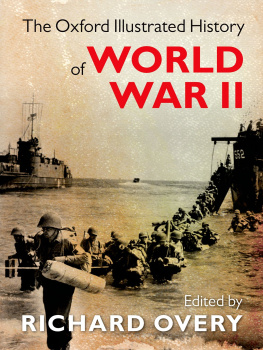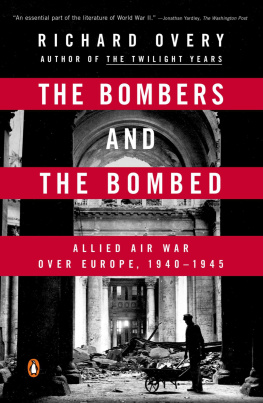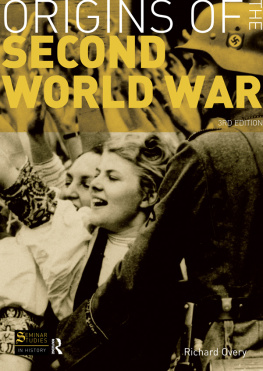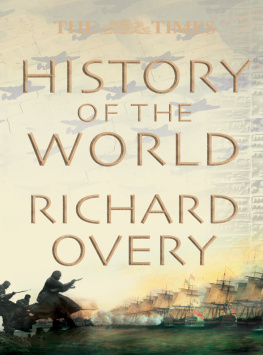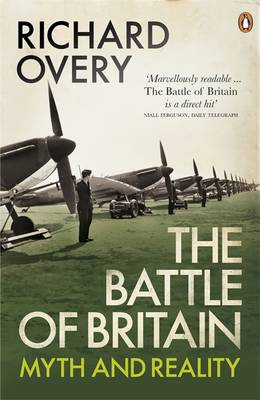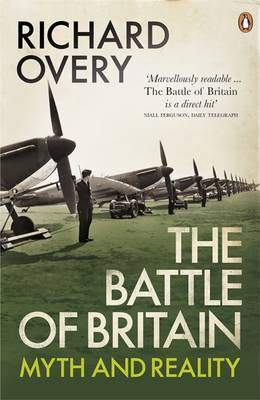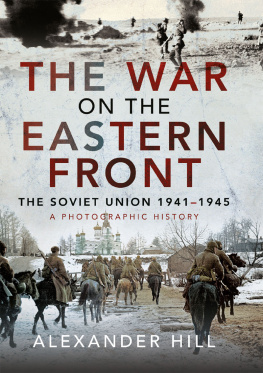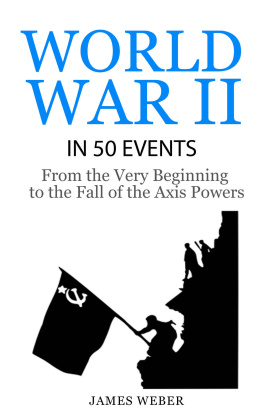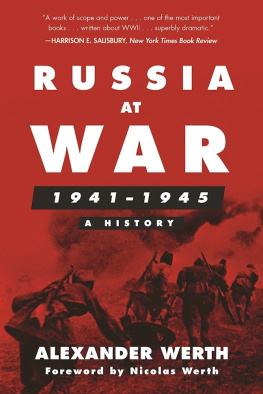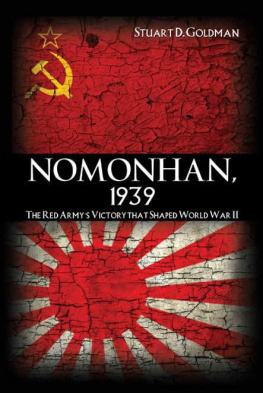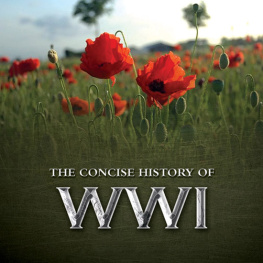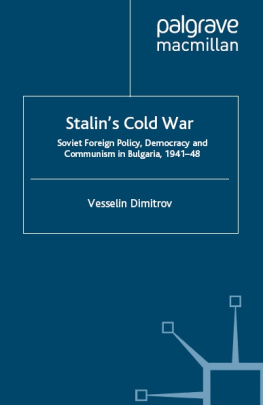THE OXFORD ILLUSTRATED HISTORY OF
WORLD WAR II
The twelve historians who contributed to The Oxford Illustrated History of World War II are all distinguished authorities in their field. They are:
RICHARD BESSEL, University of York
PATRICIA CLAVIN, University of Oxford
DAVID EDGERTON, Imperial College London
DAVID FRENCH, University College London
ERIC GROVE, Liverpool Hope University
NICOLA LABANCA, University of Siena
STEVEN HUGH LEE, University of British Columbia
EVAN MAWDSLEY, University of Glasgow
RICHARD OVERY, University of Exeter
GEOFFREY ROBERTS, University College Cork
MICHAEL SNAPE, University of Birmingham
DAVID WELCH, University of Kent

Great Clarendon Street, Oxford, ox 2 6 dp , United Kingdom
Oxford University Press is a department of the University of Oxford. It furthers the University's objective of excellence in research, scholarship, and education by publishing worldwide. Oxford is a registered trade mark of Oxford University Press in the UK and in certain other countries
Oxford University Press 2015
The moral rights of the authors have been asserted
First Edition published in 2015
Impression: 1
All rights reserved. No part of this publication may be reproduced, stored in a retrieval system, or transmitted, in any form or by any means, without the prior permission in writing of Oxford University Press, or as expressly permitted by law, by licence or under terms agreed with the appropriate reprographics rights organization. Enquiries concerning reproduction outside the scope of the above should be sent to the Rights Department, Oxford University Press, at the address above
You must not circulate this work in any other form and you must impose this same condition on any acquirer
Published in the United States of America by Oxford University Press 198 Madison Avenue, New York, NY 10016, United States of America
British Library Cataloguing in Publication Data Data available
Library of Congress Control Number: 2014946123
ISBN 9780199605828
ebook ISBN 9780191045394
Printed in Italy by L.E.G.O. S.p.A.
Links to third party websites are provided by Oxford in good faith and for information only. Oxford disclaims any responsibility for the materials contained in any third party website referenced in this work.
EDITORS PREFACE
T HE Second World War is now three generations away, the anniversary of its end in 2015 seventy years since the conflict formally ended. The war has left a long shadow across the second half of the twentieth century. Memorialization of its victims continues and popular fascination with its history is unabated. Unlike the Great War of 191418, the second conflict affected literally the whole world; it resulted in around five times as many deaths; and it was punctuated by remarkable moments of drama and sacrifice, all of which explains that persistent interest. The chronological distance from the war has, however, allowed historians to think differently about how to describe and define it, how to explain its course, and above all what subjects should now concern us when considering wartime experience. The Oxford Illustrated History of World War II follows a proud tradition in the Press in producing up-to-date and profusely illustrated volumes on a range of historical subjects. The current volume is designed to introduce a range of themes that are less commonly found in general histories of the war and which reflect current developments in historical scholarship. It is also designed to bring the war to life by presenting it in visual terms. The war was fought at a time when photo-journalism was at its zenith and colour film just coming into its own; the propaganda apparatus in every warring state produced leaflets and posters in profusion; official artists were organized even more than in the First World War to provide portraits of wartime life. There is of course an enormous wealth of material available to illustrate the war; the images chosen here are designed to accompany points raised in the texts and should be viewed with that in mind. My task as General Editor has been made easier thanks to the quality of the different contributions and the helpfulness and patience of the contributors during the editorial process. I am grateful to the team at Oxford University Press for all their help in turning this into a successful and visually attractive volume, in particular to Matthew Cotton, Kim Behrens, Kizzy Taylor-Richelieu, and Paul Simmons, who drew the maps. The result is, I hope, a fitting way to re-examine a conflict that with the passage of time remains a lived experience for only a few but which has become in the interval a vibrant example of living history.
richard overy
Exeter and London, 2014
CONTENTS
Richard Overy
Patricia Clavin
Steven Hugh Lee
Nicola Labanca
Richard Overy
Eric Grove
Evan Mawdsley
David French
Richard Overy
Michael Snape
Richard Overy
Richard Bessel
David Edgerton
David Welch
Geoffrey Roberts
RICHARD OVERY
It is a commonplace that the Second World War was both global in extent and total in character. And yet with the passage of time since the end of the war in 1945 both of these realities seem more difficult to explain than they did at the time. That almost the entire surface of the earth, and the skies above, should be engulfed by war is an extraordinary, unique phenomenon. Even those nations that could remain neutral or were distant from the actual fighting were profoundly touched by war. Volunteers from neutral Spain went off to fight against Bolshevism in Hitlers war on the Soviet Union; neutral Swiss banks stockpiled gold melted down from the dental fillings and jewellery of murdered European Jews; faraway Brazil declared war on Germany and Italy in 1942 and sent two divisions to fight in the last stages of the European war in northern Italy. From the Aleutian Islands in the northern Pacific Ocean to the jungle-coated island of Madagascar, from the deserts of North Africa to the harsh Arctic Ocean, states fought a desperate war for what they regarded as just causes. The sheer geographical scale of the war is a challenge to any history of the conflict, and demands its own explanation.
The geography of the Second World War was dictated by the ambitions of the aggressor statesGermany, Italy, and Japan (and the Soviet Union in 193940 in Poland and Finland)in a world where global and regional security systems could no longer effectively function, as the opening chapter shows, either through the operation of self-restraint or through coercion. Each of these states pursued a number of distinctly separate wars to try to create new security regimes to protect and secure their international status. Although the ambitions of the three so-called Axis states were confined to their own spheres of interest or new orders in Europe, the Mediterranean, and Asia (defined in the Tripartite Pact signed in Berlin in September 1940), the conflicts eventually coalesced into world war principally because of the global reach of the Western AlliesBritain, the British Commonwealth and Empire, and the United Statesand the global nature of the aggregate threat that they perceived.
The territorial spread of conflict from the mid-1930s was literally world-wide. Italy fought wars against Ethiopia in 19356, in Spain to help Franco, briefly against France in June 1940 and then against the British Commonwealth in Africa, before invading Greece in October 1940 and opening a Balkan front. Germany began with a war against Poland on 1 September 1939 that grew immediately into a war with Britain and France; in February 1941 German forces set up a Mediterranean front; in June 1941 another war was launched against the Soviet Union, distinct from the war in the west; in December 1941 war was declared on the United States. Japan began aggression in China in 19312, escalated the conflict into full-scale war in July 1937, fought briefly against Soviet forces in 1938 and 1939 on the Manchurian border, and finally added a major conflict in the Pacific Ocean theatre against the United States, Britain, The Netherlands, Australia, and New Zealand. Though at times these aggressive wars were linkedfor example, German help for the failing Italian army in North Africa and Greecethey were generally fought as separate contests, which is why they are dealt with in this volume as three sets of wars, one each for Japan, Italy, and Germany.

